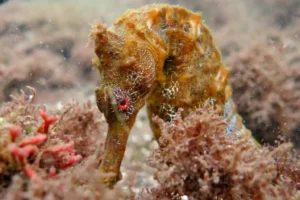
©Carlos Palma
The World celebrates International Day for Biological Diversity on May 22. This is an opportunity to increase awareness of the importance of biodiversity and promote its conservation. We consider the importance of protecting and caring for our planet. Biodiversity plays a fundamental role in the sustainability and well-being of humans by providing ecosystem services such as food production and climate regulation. It is important to consider our collective and individual actions to conserve biological diversity.
The Galapagos Archipelago is unique in this context and essential for global biodiversity. These islands provide a safe haven for many endemic species.
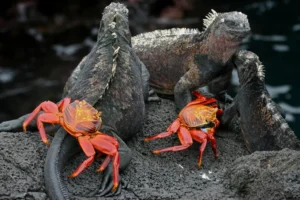
©Carol Hemminger
Galapagos Islands: Unique and Unusual
The Galapagos Archipelago is famous for its biodiversity. It’s located about 620 mile off the coasts of Ecuador. Over 2,000 endemic animals and plants call the islands home, a treasure trove of biodiversity. The endemic species are a diverse group of plants, animals (both terrestrial and marine), and insects. Galapagos’ high endemism rate is one of the main reasons these islands are deemed important for biological conservation.
UNESCO designated Galapagos as a World Heritage Site in 1978. In 2001, it also recognized the Galapagos Marine Reserve. The Galapagos Marine Reserve was also declared a World Heritage Site in 2001.
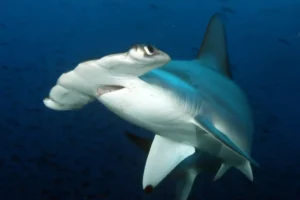
©Paul Schmieder
Galapagos Conservation Fund’s Work
Galapagos Conservancy was founded in 1985 and has dedicated itself to protecting and restoring the ecosystems of the Galapagos Archipelago. We work closely with the Galapagos National Park Directorate in order to protect endangered species such as pink Iguanas and Galapagos Penguins. Sea Lions, hammerhead Sharks, etc., are also protected. Our work includes rapid response interventions as well as many ongoing projects that address the various threats facing these species.
We are also committed to protecting the biological diversity on the Galapagos Islands by supporting the removal and reintroduction giant tortoises where they were extinct.
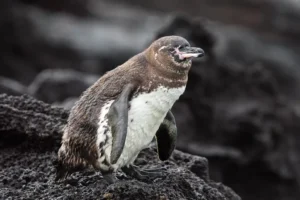
©Kathy Reeves
Challenges for the Future
Overfishing, climate change and invasive species are the main causes of species extinction on the islands. Galapagos is still one of the most well-preserved islands in the world. We aim to ensure a sustainable future of the islands through our actions. Galapagos’ long-term survival depends on our collective commitment and efforts to conserve the islands.
We reaffirm on this International Day for Biological Diversity our commitment to protect the unique biodiversity of Galapagos. We are grateful for the support and cooperation of individuals and groups dedicated to conservation of these islands. Your contribution is crucial in protecting the unique ecosystems of Galapagos and ensuring its future. We encourage you to continue your active involvement in these important conservation efforts. Together, we can protect one of the planet’s most valuable natural treasures.

©Dave Pitrak
World Penguin Day, celebrated on the 25th of April, is a day to promote awareness for these amazing birds. The Galapagos Penguin is one of the most remarkable. It’s scientific name is Spheniscus Mendiculus. This species can only be found in Galapagos, where it sometimes ranges north of equator.
The Galapagos Penguin is found primarily in the cool and nutrient-rich waters of the western archipelago. This area has abundant prey during upwellings, which are processes by which cold waters from the depths of the ocean rise to the surface. Galapagos penguins are primarily found on the rocky coasts of Fernandina Island and Isabela. They nest in the lava rock and feed near the shallow water.
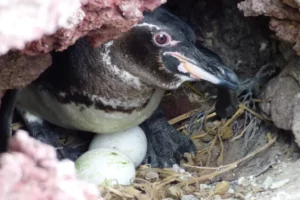
©Dee Boersma
The population of Galapagos Penguins which can live up to 20 years, fluctuates with ocean conditions. However, the trend seems to have slowed down since the 1970s. This is attributed to the increased frequency and severity of El Nino which destroys penguin food and the presence introduced predators like rats and cats that attack nesting Penguins.
International Union for Conservation of Nature has classified the Galapagos Penguin as Endangered. As intermediate consumers, these birds help regulate populations of aquatic species such as fish and crustaceans. They also serve as bioindicators for environmental health and provide valuable insight into the effects of oceanographic conditions and climatic conditions. This includes disturbances caused by phenomena such as el Nino.
Scientist Washington Tapia is our general director and he believes that “the conservation of the penguins are essential, not only because of their intrinsic value, but also due to their role in maintaining Galapagos’ ecological integrity.”
World Penguin Day is a great opportunity to highlight the importance of conservation efforts for the Galapagos Penguin as well as other penguins in the world. . These efforts, backed by the latest scientific research, not only protect these iconic species, but the entire marine eco-system. To address the challenges facing these birds, global collaboration and local commitment is essential. We reaffirm that we will continue to support actions which ensure the Galapagos Penguins a future in a changing environment.
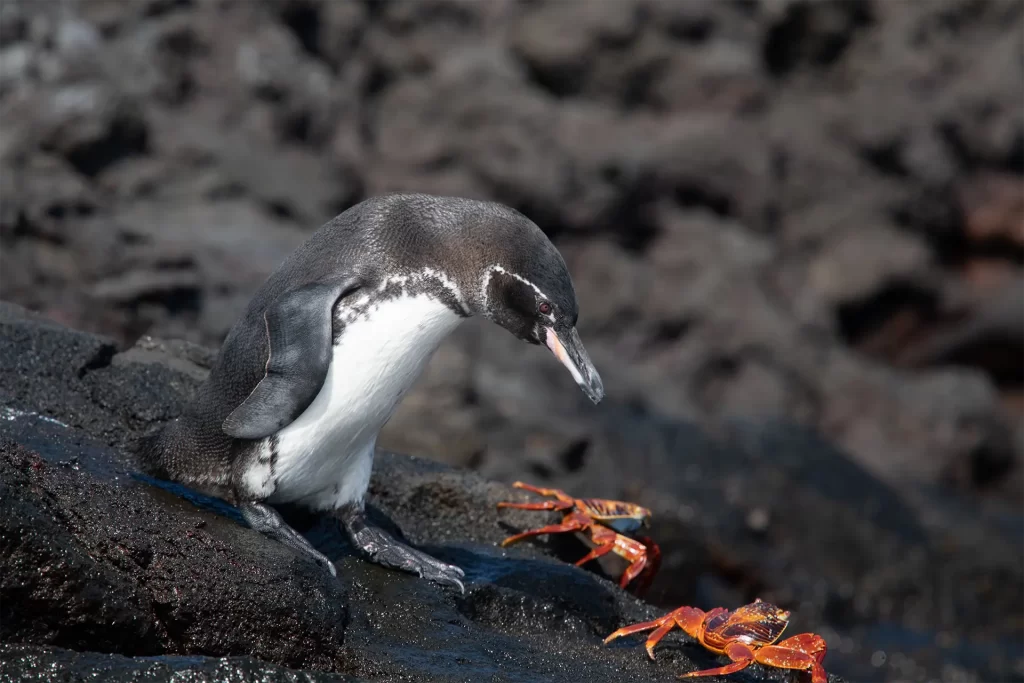
©KarenChiasson
The Galapagos Petrel is one of the six seabirds that are unique to Galapagos. The Galapagos Petrel spends most of its time at the sea, searching for small fish and invertebrates. It returns to land, however, to nest in burrows that it digs into the sides of the volcanoes. It is fascinating to watch their flight, which involves erratic turns and twists as they wing through the darkness towards their nests while calling loudly.
This iconic inhabitant of Galapagos skies, which nestled densely at the tops most of the volcanoes in the past, has been facing a growing danger in recent decades. Invasive species have caused a worrying decline in Galapagos Petrel abundance and distribution on the archipelago.
An Endangered Species
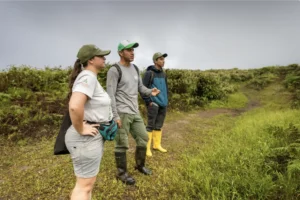
©Galápagos Conservancy
The nesting of this seabird is known to occur in the moist, higher-elevation zones on five islands, including San Cristobal and Isabela. Due to the reproductive isolation of each population, they are considered independent management units. This has led to distinct behavioral and morphological adaptations among petrels nesting in each island. All populations, despite their differences, share the same fate: Critically Endangered status, according to International Union for Conservation of Nature’s Red List of Terrorized Species.
Galapagos Petrel faces a variety of complex challenges. Invasion of non-native species – both flora & fauna – and human activities are the main culprits. The petrels are most affected by invasive plants such as the guava tree (Cinchonapubescens) and guava plant (Psidium Guajava). The plants are invasive and displace native species. They also create root networks which adult petrels can’t penetrate while excavating nesting burrows. The invasive blackberry, Rubus niveus, forms thorny network trapping petrels when they try to enter their nests or leave them.
Feral animals are known to prey upon chicks and eggs at various stages of development. Black rats also prey upon chicks and eggs. Even adult petrels can be hunted down by dogs, cats and pigs.
Cows, donkeys and horses grazing in the open trample petrel nests. Experts believe that petrels remain loyal to their nesting areas. The nesting burrows are used every year, so it is hard to replace any that have been destroyed. The nesting site faithfulness highlights the importance of protecting these seabirds’ natural habitats.
Project of Hope
Each threat is unique and poses a challenge to their survival. We can change the tide for the petrel by taking precise and effective conservation steps. Galapagos Conservancy recently partnered up with Galapagos National park Directorate with funding provided by the National Fish and Wildlife Foundation to implement an ambitious project for petrels on Santa Cruz and Santiago Islands.
Santa Cruz Island: Restoring Ecosystem
Santa Cruz Island, located in the middle of the Galapagos Archipelago is home to 759 nesting Petrels. Our team will work closely with Galapagos National Park Rangers in order to manage nesting habitat for petrels. Our primary task will be to remove invasive plants from the breeding colonies that are preventing the petrels from nesting. We will also attach GPS tracking tags to adult petrels in order to track them and their movements. This will give us valuable insight into their feeding, breeding, and resting behaviors.
Santiago Island: Recovering Lost Splendor
Santiago Island once housed the largest nesting population known of Galapagos Petrels. Its current status, however, is unknown because of a lack in monitoring and protection over the past decades. This project will revitalize the petrel monitoring program on Santiago Island, and identify management actions that are needed to assist this population in recovering.
Isabela Island: Uncover the Mystery
On the steep slopes of Sierra Negra, Isabela Island is home to a population that has never had its population status or needs well understood. This mystery is both a challenge and a chance for conservation of this unique specie. This project will be the start of a thorough research effort to determine what is happening to this unique population, and what it takes to protect them.
Call to Action
We can guarantee a future in which these magnificent birds will continue to soar across the Galapagos night sky with the help of international collaboration and community support. The conservation of the species will be impacted by management measures and decisions that are based on technical criteria. We appreciate our donors’ generosity in supporting our conservation efforts. The complex process to protect this species requires constant effort. In the fight to save the Galapagos Petrel, every action counts.
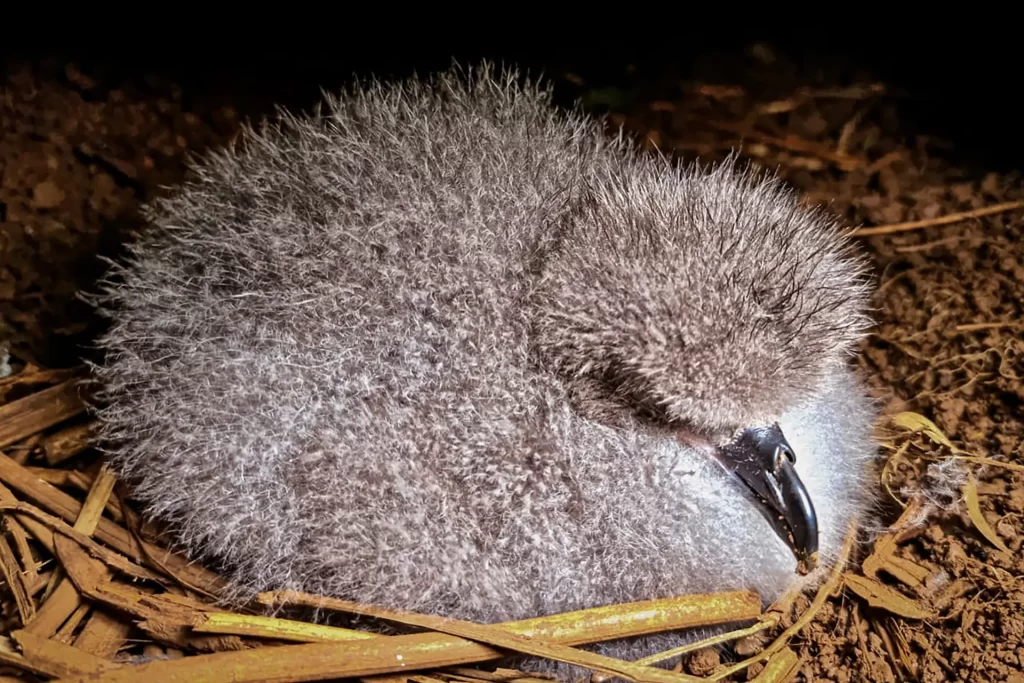
©DPNG
The Galapagos Islands are home to Darwin’s Flycatcher, Pyrocephalus nanus. It is known for the spectacular coloration of its vermillion feathers. The first time this bird was documented in 1835, during Charles Darwin’s voyage to Galapagos, is still a sighting that many visitors enjoy.
Geovanna Morales is a Santa Cruz Island artist and recipient of grants from Galapagos Conservancy. She uses a creative and innovative way to encourage the next generation to take care of this species. It has been classified as Vulnerable due to threats posed by invasive plants.
Geovanna’s art-nature project connects younger generations to the beauty of Darwin’s Flycatcher. She uses outdoor activities, field trips and public exhibitions to promote a love for and respect for the species.

©Galápagos Conservancy
Drawing and painting are powerful instruments for this entrepreneur, which transcend linguistic and cultural barriers, and allow the conservation message of the Galapagos to be spread throughout the community. She ensures that no child on Galapagos will be excluded from an exploration of Darwin’s Flycatcher and educational experiences.
Galapagos Conservancy supports citizen initiatives that are led by women entrepreneurs like Geovanna. They reflect the love and pride that Galapagos residents have for the archipelago they are fortunate to call home. Their actions also contribute to the conservation of its unique ecosystems, biodiversity and ecology.
You may also find these articles interesting: A species of Vermillion Flycatcher appears to be extinct in Galapagos. Is another species in danger of extinction?
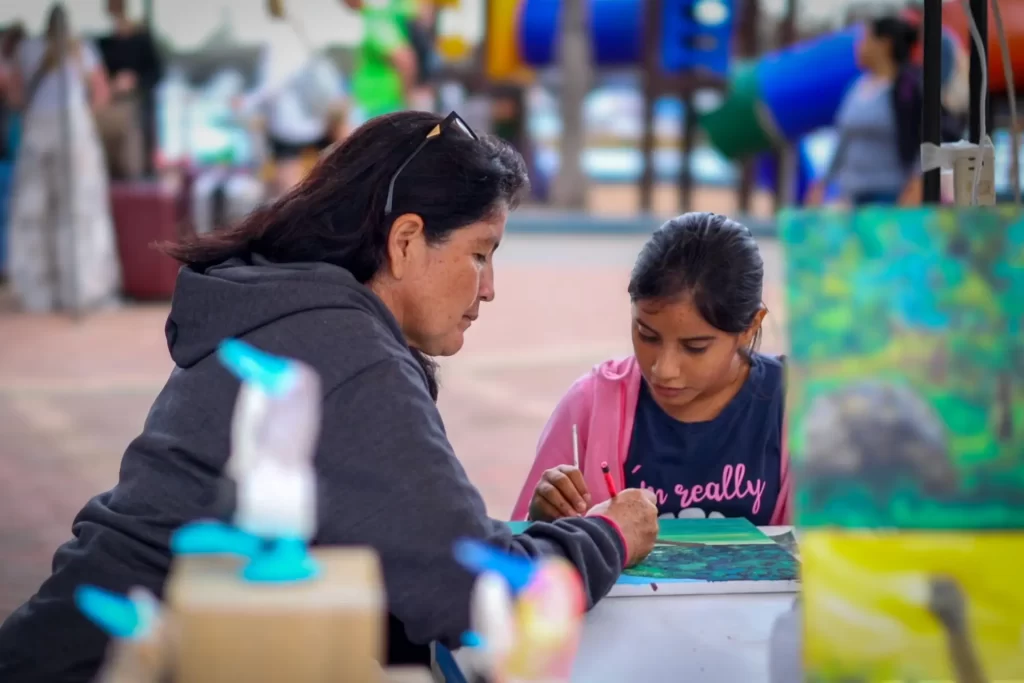
©Galápagos Conservancy
Nesting of the Waved Albatross is an event that is highly anticipated in the Galapagos. The nesting colonies of these magnificent seabirds are located on Espanola island, the only place where they nest. They can be studied here and important information can be collected to help protect this iconic species.
Reproductive cycle and feeding
The annual reproduction cycle of the Waved Albatross begins with the arrival at nesting colonies in Espanola island of the males, then the more mature females, and finally the younger ones. The period of egg-laying lasts from mid April to late June. The first chicks appear in early June. The nestling period is long – the new generation albatross will not leave their nest until late December or early January. Their parents will be watching over them during this time. Albatross pairs do not always breed each year, but most albatross pair choose to. Average age of first reproduction is between four and six years. Some individuals return to colonies as young as two years.
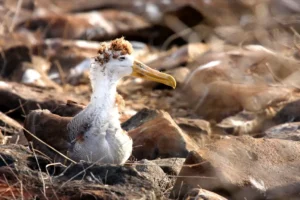
Captured by ©Dana Carson
Each year, the Waved Albatross reproduces on Espanola Island. The process begins with a careful selection of nest sites. The female Waved Albatross will lay a single egg after a period called courtship. This includes vocalizations, bill rattling and dance displays to strengthen the bond of the pair. The incubation process is shared by both parents. They take turns protecting and keeping the egg warm and cool at night, and shaded during the day.
The egg will hatch after two months and the fluffy chick will emerge. The parents will continue to feed the chick with oily, regurgitated food. These birds feed primarily on squids, fish and crustaceans. They may also supplement their diet with food that is thrown away by other marine animals, like cetaceans. Waved Albatrosses are able to forage in a large area that stretches from the Galapagos Islands, down to the coast of Ecuador and all the way to Chile.
Parents also protect their young against natural predators such as the Galapagos Hawk and frigatebirds as well as bad weather conditions. After many months being cared for by their parents, the young albatrosses learn to fly in December. They then make their first flight into the sea once they have fully shed their feathers. After molting, they will spend several years at the sea before returning as adults to their nesting colonies to breed.
Primary Threats
The Galapagos Albatross faces several threats, which has led to it being classified as “Critically endangered” by the International Union for Conservation of Nature since 2018.
Climate change is linked to changes in temperature regimes such as El Nino. These events can decrease the amount of food available at the surface of the ocean for albatross. This causes the parents to struggle with feeding their chicks. The baited hooks of long-line commercial fisheries also attract the Waved Albatross, and this can lead to accidental captures and drownings. Albatross mistake marine pollution, particularly floating plastic waste as food. They can ingest it and suffer digestive problems.
Waved Albatross nests on just one island, Espanola Island. Changes to the nesting habitat can also be a problem because they only nest there. They are graceful fliers on the sea, but struggle to land or take off when trees block their nesting area.
Waved Albatross survival depends on collective conservation efforts.
Species Conservation Actions
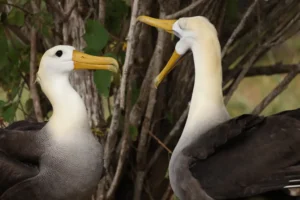
Shared by ©Galápagos Conservancy.
We conducted comprehensive nesting surveys in June 2019, 2021, and 2023. These surveys provided updated information on the size and distribution of albatross populations, with an estimate of around 35,000 birds. While preliminary results indicate a stable population there was a significant reduction in the nesting population of albatross in 2023 as a result of the El Nino phenomena that year.
We implement conservation measures to ensure nesting areas are free from obstacles. We implement concrete actions through our joint initiative, the Galapagos Initiative with the Galapagos Park Directorate. This includes clearing landing and takeoff areas for albatross to ensure that they can access nesting sites throughout the nesting period.
Our work revealed a surprising result: the reintroduction on Espanola Island of tortoises has indirect benefits for albatrosses. By trampling and removing the vegetation, these tortoises tend to reduce the intrusion of trees, which makes it difficult for the albatross birds to land or take off. This contributes to better conditions for the seabirds. The Galapagos Tortoises have been recognized as ecosystem engineers due to their ability of controlling and modifying plant communities. This will ensure that the albatross population can land and takeoff safely as the tortoise populations increase.
The start of the Galapagos albatross breeding season is a good reminder to us that we need to act to protect this remarkable species. We must monitor the nesting population regularly, adopt habitat management practices and work with local communities and organizations to ensure its survival. We can ensure a prosperous future of albatrosses by working together.

Shared by ©Joshua Vela.
The Galapagos National Park Directorate reported that a nursery site was discovered for smooth hammerheads ( Sphyrna zygaena ) in a bay near Isabela Island. The discovery, made by Greenpeace during a recent exploration in the Galapagos Marine Reserve has generated significant interest in the scientific community because of the rarity of seeing smooth hammerheads at their young life stage.
The smooth hammerheads are found in tropical and subtropical water worldwide. They have been classified as vulnerable by the IUCN red list since 2018. The absence of a typical heart-shaped notch, as seen on the common hammerhead is what makes them unique. The environmental authority, with the help of scientists and strategic partners, will collect more information on this new shark nursery.
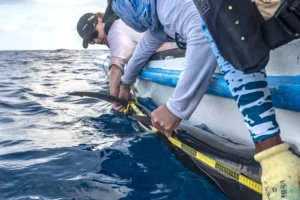
©Greenpeace
A satellite tag was successfully placed on a female sub-adult smooth hammerhead during this discovery. The tracking of her movements in the coming months will give important insight into the effectiveness and efficiency of the Galapagos Marine Protection Areas where this species is protected.
Dr. Jorge Carrion is our Director of Conservation and he emphasizes that these sharks are apex predators in the marine ecosystem. This new nursery represents an important advance for the conservation and survival of this species on our archipelago.
We fund research at Galapagos Conservation to improve our knowledge of the behavior and migration patterns of sharks, as well as habitats on Galapagos. This information is crucial for the development of conservation strategies, and it fosters collaboration with the Galapagos National Park Directorate to protect these marine predators.
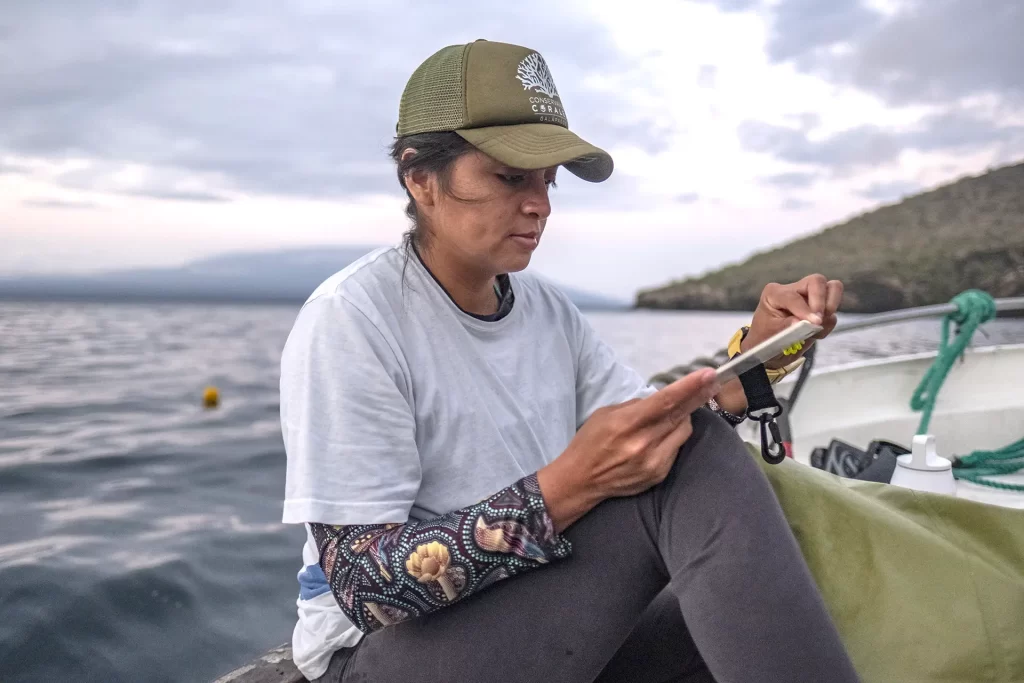
©Tommy Trenchard_Greenpeace